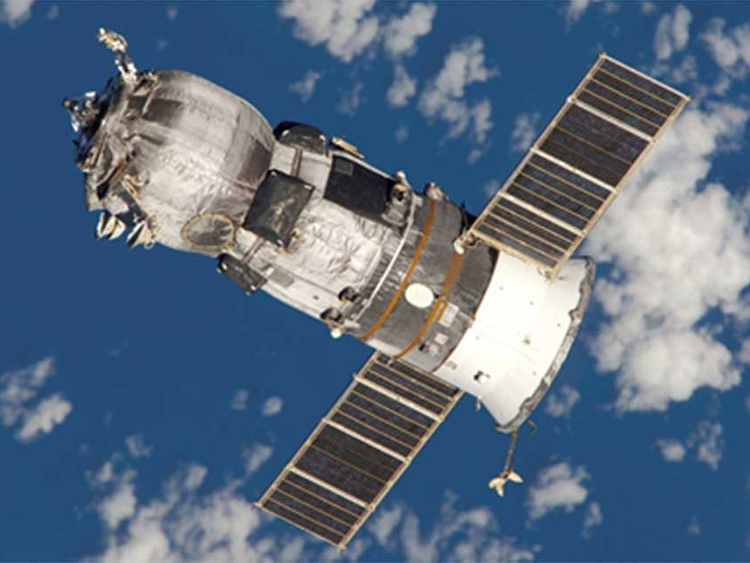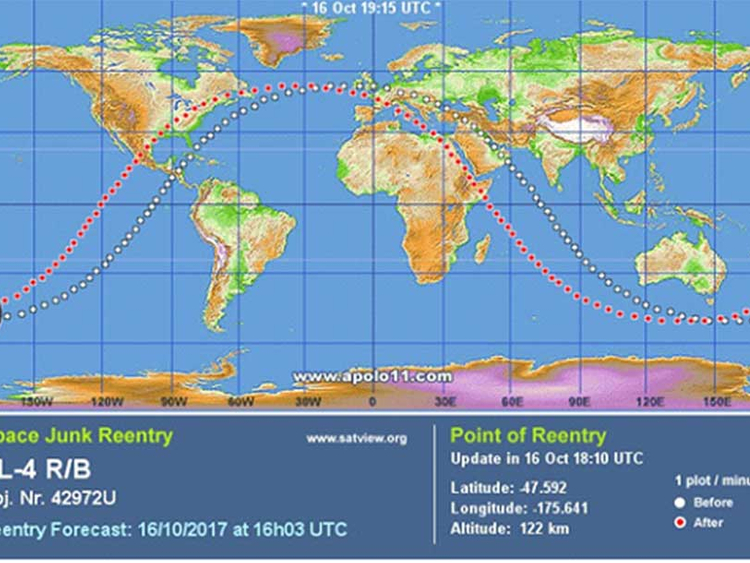
Dubai: No, it wasn’t a meteor, meteorite, asteroid nor a comet.
The Dubai Astronomy Group (DAG) clarified on Tuesday that the flaming fireball seen descending over the night sky of UAE and Oman on Monday night was a space junk.
Residents who saw the celestial spectacle at around 7.30pm on Monday speculated that the fireball flashing through the night sky was a meteor.
Hasan Al Hariri, CEO of Dubai Astronomy Group, told the media on Tuesday that the fireball was the falling debris of the Progress space module, also known as the SL-4 R/B (42972U) — a Russian cargo spacecraft used to re-supply the International Space Station (ISS) regularly.
“We didn't issue a statement right away because we wanted to be certain about what was happening, if there's any meteor expected. But it was the Progress module," Al Hariri said.
Debris
The spectacular view that lasted 80 seconds and showed the spacecraft disintegrating in the upper atmosphere before breaking up into smaller chunks that burned like fireworks.
“The trajectory of the debris was over the Arabian Peninsula crossing UAE and Oman to finally over Indian Ocean,” the group said in a statement.
The module re-entered the atmosphere at an altitude of 140km over the Arabian Peninsula, burned up as it was designed — and if there were any debris, it went straight to the Indian Ocean.
The Progress module is an automated, unpiloted resupply vehicle that was first launched to the ISS in 2000 from Kazakhstan.
It is 6.4 metres in size and carries supplies and fuel of up to 1,700kg.
Space junk
Over time, however, satellites are subject to orbital "decay", the process where they lose their orbit due to a drag force and then they start their return to Earth.
When this happens, the space junk reenters the Earth’s atmosphere but in certain cases, they are guided to ensure that the chunks will descend on uninhabitable areas.
"These space junks when landing on earth are not hazardous. The atmosphere will take care of the disintegration process so when they reach the end of their destination, if there is any leftover, they will not be hazardous," Al Hariri said.
“If it was a meteor, it would be flashy, fast and would descend in a more steep angle, not a shallow one like this," Al Hariri explained.
Al Hariri said there are other space junks expected to fall from time to time. One of which is the Tancredo-1, a small amateur radio satellite that will fall tomorrow (October 18) and the protective cover of the ISS will fall (FABRIC SHIELD (ISS DEB) will fall on Thursday.
Also, the Chinese space station Tiangong-1 (Heavenly Palace) has been declared out of control by Chinese authorities.
The eight-tonne station may re-enter the atmosphere in the last months of 2017, based on preliminary estimates.
Progress module specifications:
First launch to ISS: Year 2000
Launch site: Baikonur Cosmodrome, Kazakhstan
Launch vehicle: Soyuz rocket
Length: 7.4 m (24.3 ft)
Diameter: 2.7 m (8.9 ft)
Launch mass: 7,440 kg (16,402 lb)
Cargo mass: 1,700 kg (3,748 lb)
Length on orbit: 6 months
Return method: Destructive reentry
Source: National Aeronautics and Space Administration










